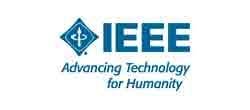The OpenFog Consortium's OpenFog Reference Architecture has been adopted as an official standard by the IEEE Standards Association (IEEE-SA) for fog computing. The new standard, IEEE 1934, uses on the reference architecture as a universal technical framework to support the Internet of Things (IoT), 5G wireless and artificial intelligence (AI) applications.
"We now have an industry-backed and -supported blueprint that will supercharge the development of new applications and business models made possible through fog computing," said Helder Antunes, chairman of the OpenFog Consortium and senior director, Cisco. "This is a significant milestone for OpenFog and a monumental inflection point for those companies and industries that will benefit from the ensuing innovation and market growth made possible by the standard."
Fog computing is a system-level horizontal architecture designed to distribute resources and services of computing, storage, control and networking anywhere along the cloud-to-things continuum. It's intended to support multiple industry verticals and application domains, enable services and applications to be distributed closer to the data-producing sources, and extend from the things, over the network edges, through the cloud and across multiple protocol layers.
"The reference architecture provided a solid, high-level foundation for the development of fog computing standards," said John Zao, chairman, IEEE Standards Working Group on Fog Computing & Networking Architecture Framework. "The OpenFog technical committee and the IEEE standards committee worked closely during this process and benefited from the collaboration and synergies that developed. We're very pleased with the results of this standards effort."
The OpenFog Reference Architecture, released in February 2017, is based on eight core technical principles, which represent the key attributes that a system needs to encompass to be defined as "OpenFog." They are security, scalability, openness, autonomy, RAS (reliability, availability and serviceability), agility, hierarchy and programmability. The reference architecture and IEEE standard are intended to address the need for an interoperable end-to-end data connectivity solution along the cloud-to-things continuum.
"As a consortium, we developed the OpenFog Reference Architecture with the intention that it would serve as the framework for a standards development organization," Antunes said. "We're pleased to have worked so closely with the IEEE in this effort as the result is a standardized computing and communication platform that will serve as a catalyst to the next digital revolution."
